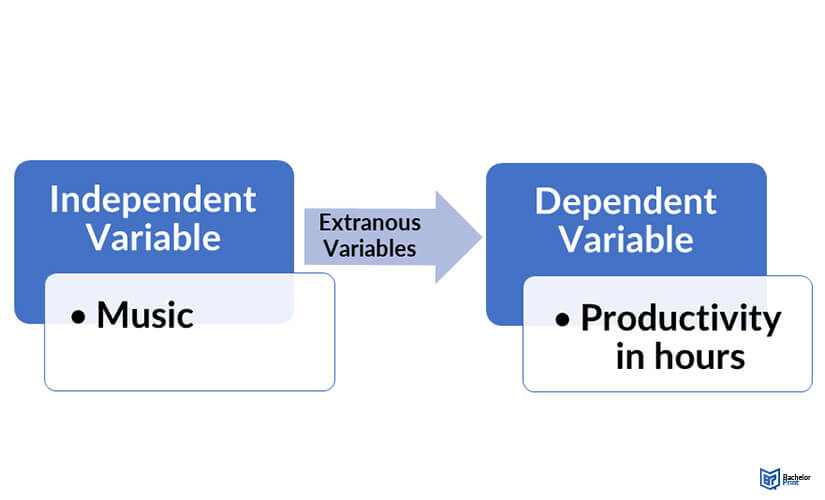
In a controlled experiment, the researcher manipulates one variable, the independent variable, while keeping all other variables constant to observe the effect on the dependent variable. This careful control forms the core of this methodology, eliminating the possibility of external factors influencing the outcome and thus allowing the researcher to draw stronger conclusions about cause-and-effect relationships.
Definition: Controlled experiment
Experiments in research entail manipulating or changing an independent variable and assessing its effect on the dependent variable or outcome. All the variables except the independent variable are held constant in a controlled experiment. Researchers begin by defining the variables present to ensure objective measurement of the essential variables.
The variables held constant are known as control variables. Researchers can control variables by:
- Maintaining variables at a regulated level
- Analyzing variables for statistical purposes
- Using random tests in an experiment
Why is a controlled experiment important?
A controlled experiment ensures internal validity, essential for establishing cause and effect through experimentation.
Many factors can influence productivity. A controlled experiment is ideal to test whether listening to music affects productivity.
In an uncontrolled experiment, these variables may affect a worker’s productivity, which makes it hard to assess the true impact of music on productivity.

Methods used in controlled experiments
Researchers use standard data collection practices to control variables in a study. The same tools should be used in a shared environment to test all the participants. A systematic approach is applied to change only the independent variable, for instance, the type of music.
Sampling methods can be used to manage other extraneous variables. You should select the most representative sample based on a criterion that considers all the essential characteristics, for example, using participants from a specific job description rather than short participants. Noting the extraneous variables in your study can help in further analysis.
Once the participants have been identified, they are grouped to test individual independent variables. The identifiable groups guide the implementation of controls in the experiment.
Control groups
A controlled experiment uses control groups. Researchers use control groups to test the effect of a given variable by comparing the control group with an experimental group. The control group is isolated from the experimental group to ensure the independent variable does not affect the control group.
The only difference between these groups is the type of music. All other characteristics are identical.
Random assignment
A random assignment prevents systematic differences between an experimental group and the control group. It involves placing the research subjects into random groups. Every participant has an equal opportunity to be placed in the experimental group.
Randomization is necessary for “true experiments”, as opposed to quasi-experiments, where the subjects are chosen based on a criterion.
Masking (blinding)
Masking in a controlled experiment involves hiding some variables from the researchers and the subjects. Researchers often intentionally conceal the presence of certain variables in a study to prevent bias that may arise due to the participants’ awareness. Masking ensures strong internal validity by ensuring the participants behave naturally.
Researchers may unknowingly influence the behaviour of participants. Other environmental cues may also nudge participants to behave in a particular way. Masking guarantees that no undue biases can affect the result of the study.
Problems with controlled experiments
Controlled experiments may be an effective research tool. However, there are some challenges associated with its methodology
✘ Difficulties controlling all variables
Every research participant behaves in a certain way based on their beliefs, personality, attitudes, and other factors. This poses a problem for researchers attempting to hold the extraneous variables constant because there are too many variables. However, a researcher may limit the extraneous variables to manage their influence on the outcome.
✘ Risk of low external validity
Many controlled experiments do not apply to other contexts outside the experiment. A highly controlled experiment may lack real-world relevance as it considers a limited list of variables. Researchers need to consider the objectives of their experimental studies to prioritize control or applicability.
FAQs
A control experiment is a method of experimental research where only the independent variable is changed. The dependent variables are held constant in a controlled environment to isolate the effect of one variable.
The control group in a controlled experiment is the group that doesn’t receive a variable. Experimental programs such as clinical trials use control groups in testing new drugs by comparing those who receive treatment and those who don’t.
Sometimes, researchers may be concerned about the effect of a subject’s awareness on the findings of a research project. Masking is a deliberate action by researchers to hide some variables in a study as a measure to build strong internal validity.
Controlled experiments are commonly used in healthcare research. New treatment methods are tested on groups of patients to test the efficacy and other variables that may affect their effectiveness.
